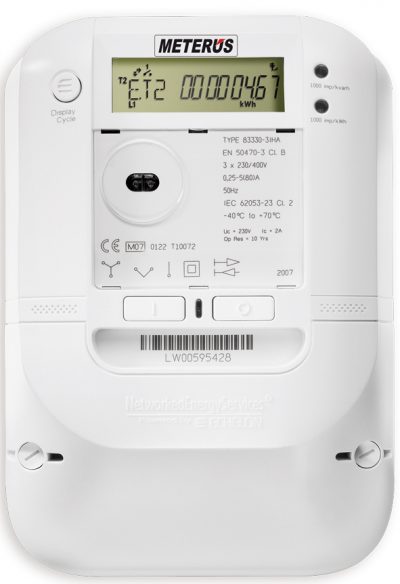Toxic Risks of Electromagnetic Fields: The Health Impacts of Smart Meters

Yesterday a neighbour voiced misgiving about the smart meters which the government decided to offer as part of measures to upgrade our energy supply and tackle climate change. They are said to give the user more control over energy consumption, help him/her to understand the bills, end estimated readings and show the cost of energy used.
In 2014 This is Money (click on link for clearer text) reported fears that two-thirds would not work and the meters would not save money and the Telegraph earlier this month published six important reasons to ’say no to a smart meter’ which may be read by following this link. But not one was related to misgivings which have been reported for some years.

In 2012, environmental health Professor David Carpenter, founder of Albany School of Public Health, and author of 370 peer-reviewed publications, issued a public letter on the plausible toxic risks of intensive, pulsed-microwave smart metering. His letter Smart-meters: Correcting the Gross Misinformation was signed by 50 international health experts:
“We, the undersigned … have co-authored hundreds of peer-reviewed studies on the health effects of electromagnetic fields (EMFs) … Mass deployment of smart grids could expose large chunks of the general population to alarming risk scenarios … More than a thousand studies done on low intensity, high frequency, non-ionizing radiationgoing back at least fifty years, show … biochemical changes which … may lead to diseases.”
Findings: ‘minimal risk’ – aka some risk; ‘exaggerated concerns’ – aka some but possibly lower causes for concern

In 2013, the fears of residents’ opposed to smart meters, which led to bans in two regions of California were dismissed in the Huffington Post as ‘pseudoscience, making the greatest inroads in the United States’:
“Some claim ‘electromagnetic hypersensitivity,’ or in other words that radiation from devices such as smart meters cause dizziness, fatigue, headaches, seizures, memory loss or other maladies. Others claim that smart meters cause cancer. Similar episodes have occurred in the UK, Canada and elsewhere”.
A 2010 13-nation study commissioned by the World Health Organization was cited in the Huffington Post article as clear scientific evidence of safety as regards cancer, because it found “at most a very minimal and partially contradictory link between cancer risk and heavy cell-phone usage. Along this line, concerns that cell phone usage by pregnant mothers endangers their fetuses are wildly exaggerated”. On 31st May 2011, the World Health Organisation’s International Agency for Research on Cancer (IARC), referring to mobile phone usage, classified radio frequency electromagnetic fields as possibly carcinogenic to humans, based on an increased risk for glioma, a malignant type of brain cancer.
In April this year this site reported that Sarah Knapton, Science Editor of the Telegraph, had reported that new analysis of government statistics by researchers at the charity Children with Cancer UK found that there are now 1,300 more cancer cases a year compared with 1998, the first time all data sets were published – a 40% rise.

Dr Denis Henshaw, Professor of Human Radiation Effects at Bristol University, the scientific adviser for Children with Cancer UK, said many elements of modern lifestyles are to blame:
- air pollution was by far the biggest culprit
- obesity,
- pesticides
- solvents inhaled during pregnancy,
- circadian rhythm disruption through too much bright light at night,
- radiation from x-rays and CT scans,
- smoking during and after pregnancy,
- magnetic fields from cables and power lines,
- magnetic fields from gadgets in homes,
- and potentially, radiation from mobile phones.
British Gas quotes Public Health England:
“PHE states there is no evidence to suggest that exposure to the radio waves produced by smart meters poses any health risk. In addition, they state that the exposure from smart meters are lower than from other appliances we use today like televisions and microwaves, and likely to be thousands of times lower than from a mobile phone. Their website states: ‘the evidence to date suggests exposures to the radio-waves produced by smart meters do not pose a risk to health’. For more details on smart meters and health, see PHE’s website”. The article has been removed from the website and is now archived – standard practice for controversial material.
Better to be safe than sorry? Adopt the precautionary principle detailed in Article 191 of the Treaty on the Functioning of the European Union (EU), which “aims at ensuring a higher level of environmental protection through preventative decision-taking in the case of risk . . . the scope of this principle . . . covers consumer policy, European legislation concerning food and human, animal and plant health.

